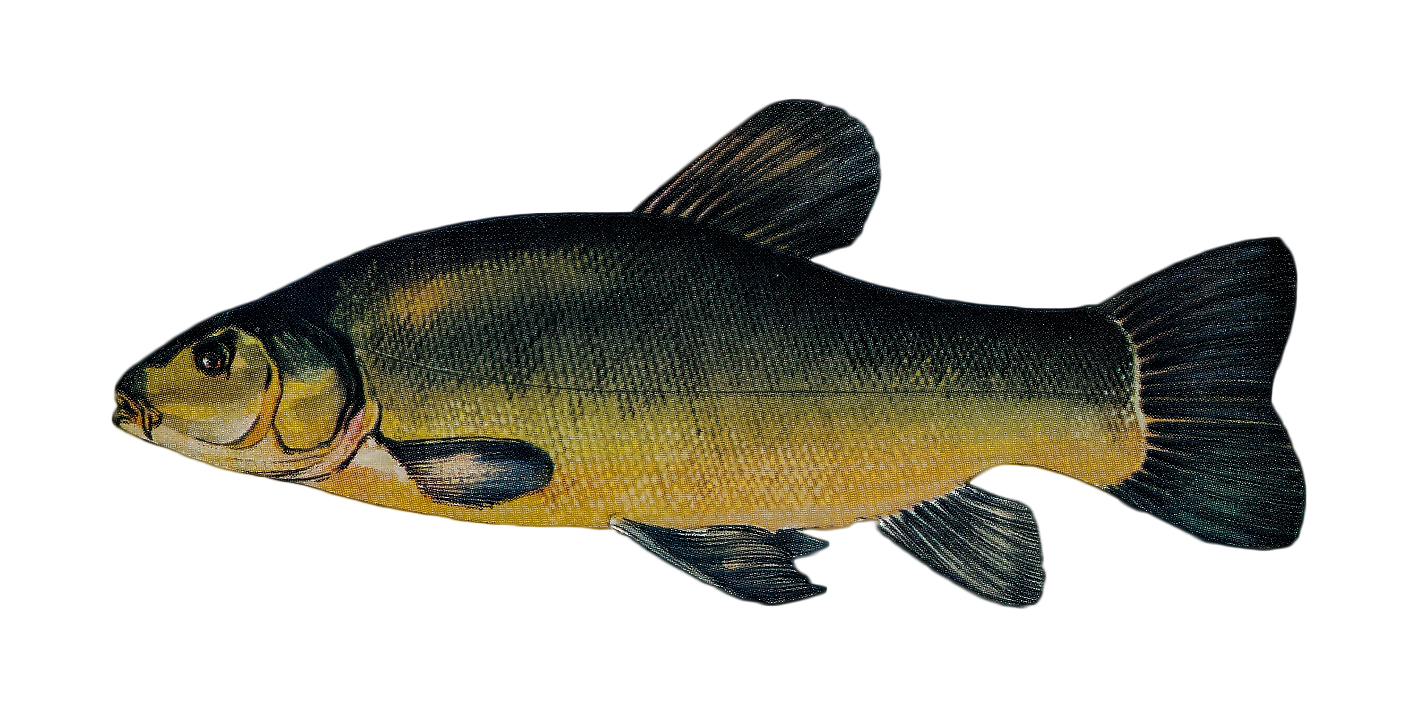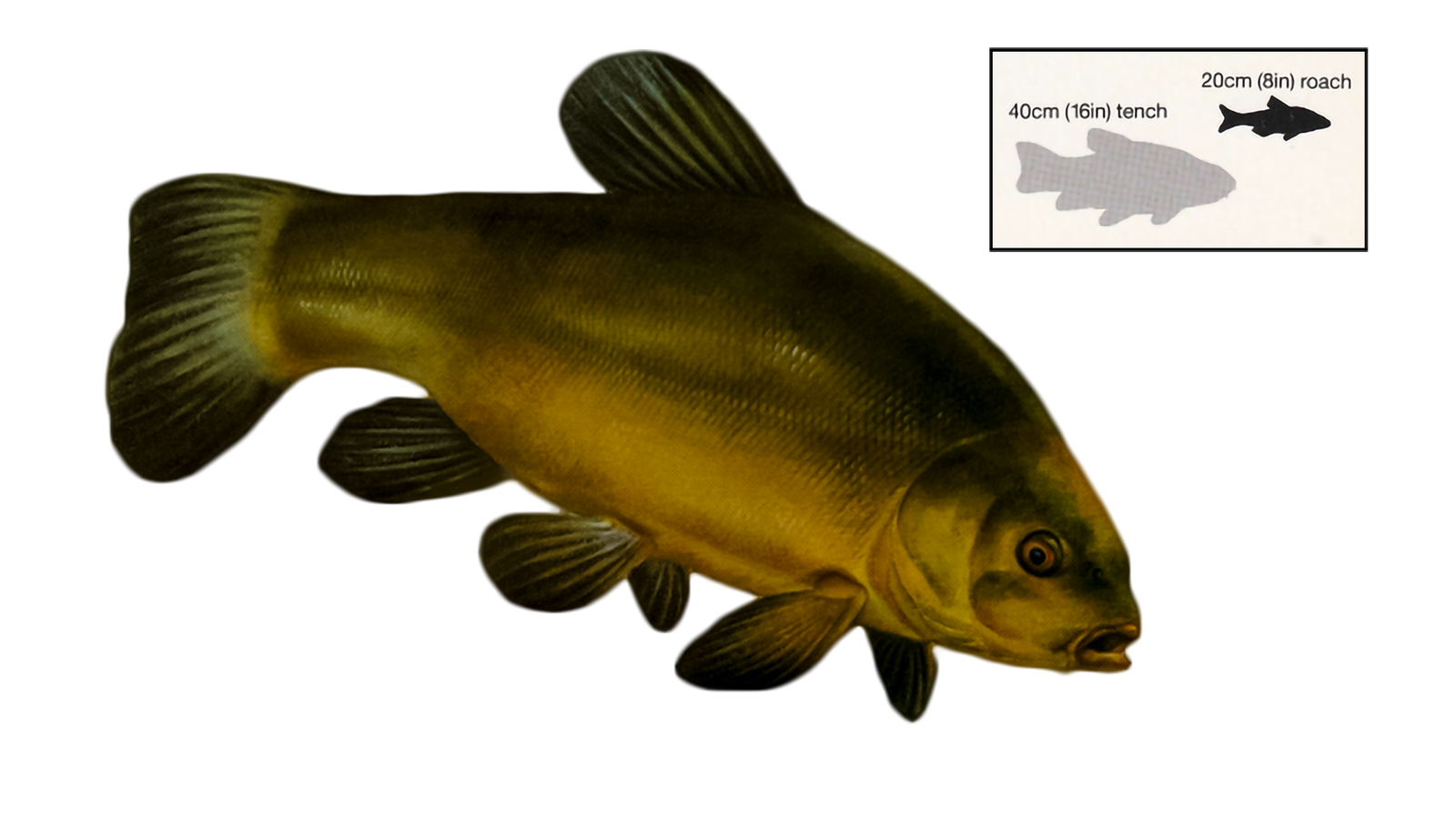

"An inhabitant of shallow ponds and lakes, the hardy Tench is one of the main reasons for summer angling".
Tench are closely related to Carp and so provide swashbuckling fights, giving anglers fantastic sport in both playing and landing.

Tench (Tinca tinca)
Average Weight - In the UK, Tench typically grow to between 16-28 inches (40-70cm) in length, and weigh between 2-5 lb (1-2 kg). In Europe Tench can grow to impressive sizes of over 12 lb (5 kg), however a fish of 3 lbs (1.4 kg) or more would be considered a great catch here in the UK.
Distribution - Tench are widespread throughout southeast England but are less common in Scotland and Wales. They are found throughout Ireland but are most common in the centre, along the course of the River Shannon.
There is something very satisfying about the appearance of the deep-bodied Tench.
The Tench is a member of the Carp family and can vary in colour from almost black through green to pale yellow.
The most usual colouring is a deep olive green back and flanks, with a paler belly.
There is also an ornamental golden variety which sometimes has black patches on its back and sides.


Tench eat all the small prey animals found on the bottom but are especially fond of Bloodworms, Jokers and other insect larvae. They also eat larger items such as Worms, Snails, Mussels and even some small fish.
The Tench feed mainly at dawn and dusk, but sometimes continue through the night. In winter they hardly feed at all, lying inactive on the mud for long periods.
Increasing numbers of large Tench are being caught in Britain and this may in part be due to the quantity of High Protein Baits (Boilies) thrown into waters every year. Tench, like Carp, eat them readily and may put on weight as a result.
A fine (male and female) pair of tench. Tench often forage in their breeding pairs and are caught together. The female is the one held slightly higher, with a rounder (roefilled) belly and shorter pelvic fins.
Tench feed almost exclusively on the bottom - finding their food by rooting around in the mud.
As the Tench do this they often release strings of fine bubbles. These come from pockets of marsh gas (mainly methane) disturbed by the Barbel as they feed in the mud. The gas filters through the Tench's mouth and gills, and the fine gill rakers produce characteristic pinhead bubbles.
Though some Tench are found in quite fast flowing rivers such as the Trent, they thrive best in rich still waters, sluggish rivers and canals.
You won't find Tench in very fast water or poor upland lakes, but they are highly tolerant of low levels of dissolved oxygen, and so do well in shallow ponds which have low water levels, or even become stagnant, in summer. Tench won't spawn unless the water has remained at 18C (64F) or above for at least two weeks.
Tench therefore spawn later than most other British coarse fish - between May and August. Each Tench pair takes several weeks to spawn, leaving many clusters of pale green eggs stuck to the stems of water plants. Large Female Tench carry as many as 750,000 eggs.
The eggs hatch out in four or five days but the Tench Larvae remain stuck to the plants by their heads until the yolk sac attached to their bellies is used up.
Then the Fry must forage for food. The young fish live in the weeds and are very rarely seen or caught, though obviously large numbers of them die in the first year, probably during the winter.
Growth is very slow at first - they only reach 20-30cm (8-12in) after three years, and spawn for the first time after at least four years.
In ideal conditions, the Tench reach about 5-61b (2.3-2.7kg) after ten years and can live up to twice that age.
Tench slime was thought to have magical medical properties - other fish would deliberately rub against them and be cured of all ills!
In the Middle Ages Tench slime was believed to cure headaches, toothaches, jaundice and many other illnesses.
People also believed that Pike would not eat Tench, perhaps because of their mythical powers.
Those anglers who have felt the frustration of losing Tench at the net to Pike know this just isn't true.